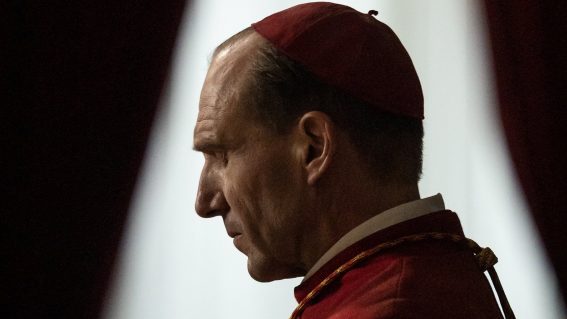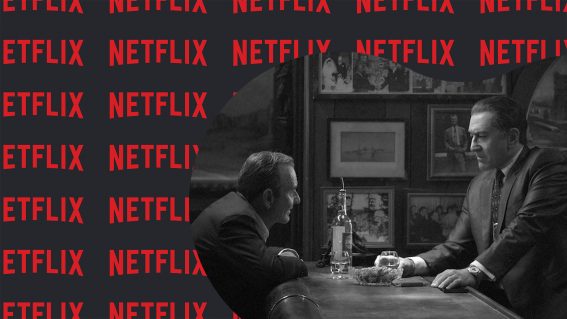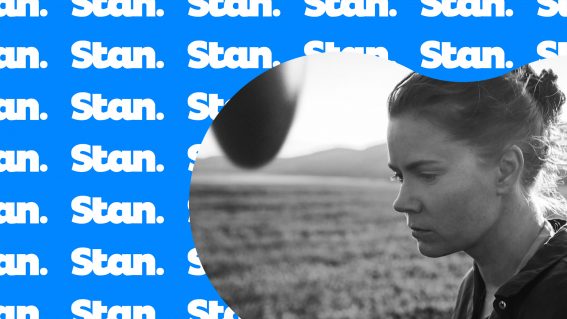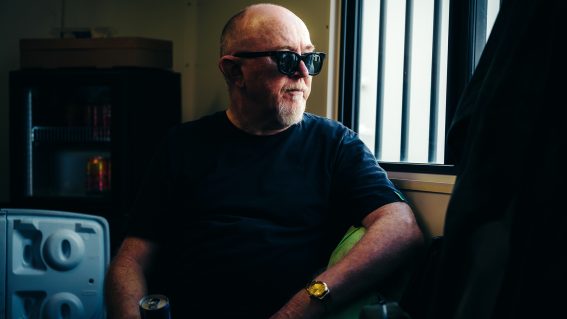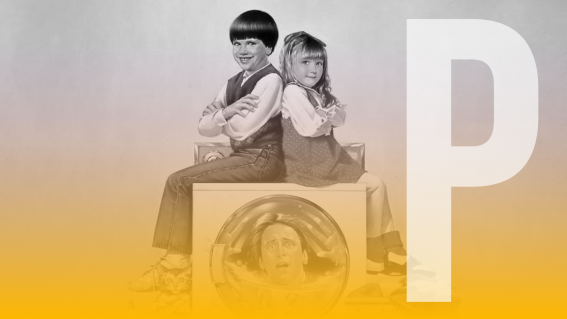The internal and external terrors of Knock at the Cabin and 10 Cloverfield Lane
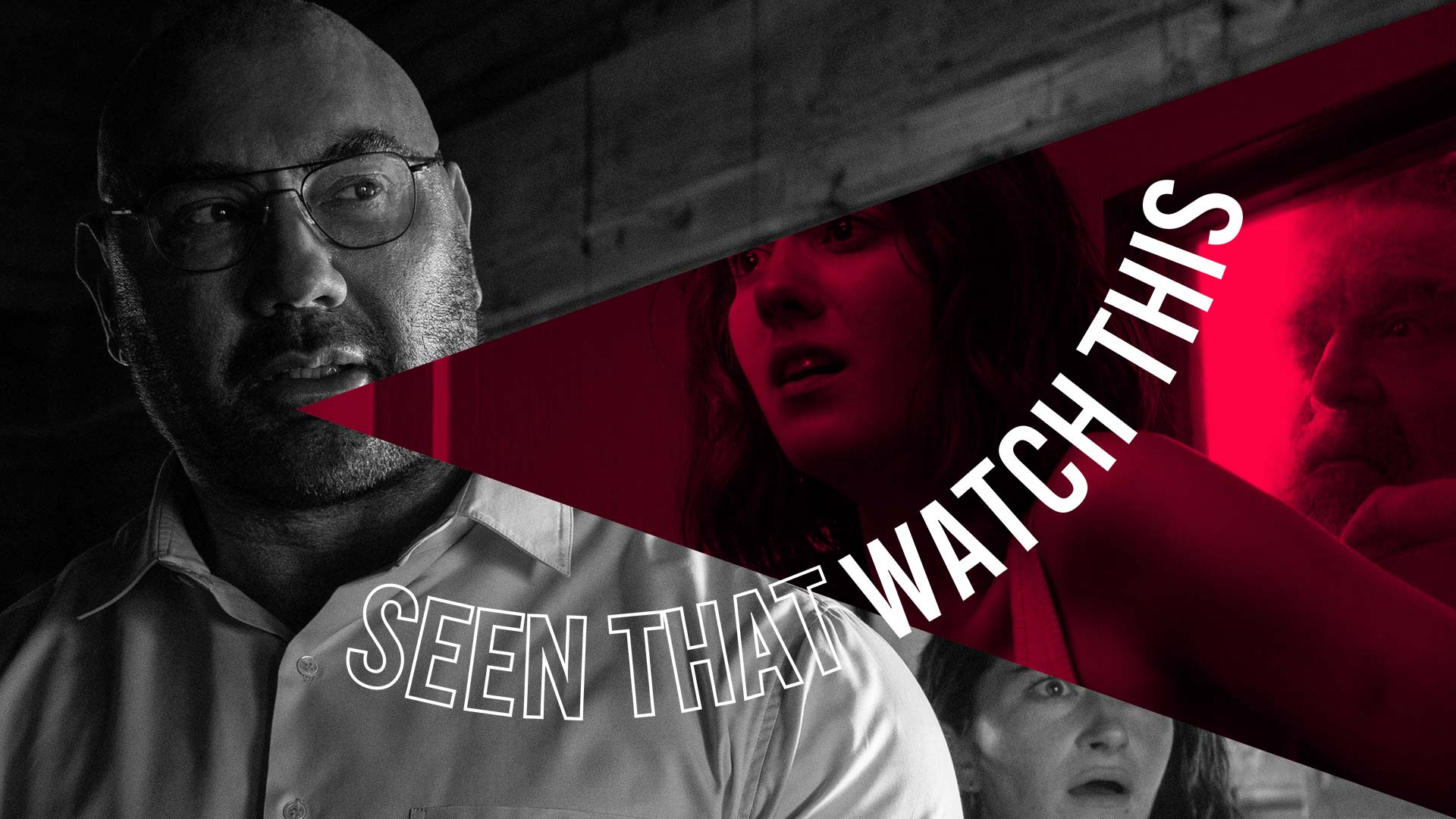
Seen That? Watch This is a weekly column from critic Luke Buckmaster, taking a new release and matching it to comparable works. This week, two tales of potential apocalypse—recent thriller Knock at the Cabin and 2016’s 10 Cloverfield Lane—destabilise reality for their characters and audience.
Knock at the Cabin
By now you may have seen M. Night Shyamalan’s excellent thriller Knock at the Cabin; if not it’s available on digital release. Adapting Paul G. Tremblay’s novel The Cabin at the End of the World, the film combines a “holiday from hell” narrative with armageddon, or potential armageddon, if we’re to believe the group of zealots who rock up unannounced, and very much unwelcome, at a family’s vacation property. They come espousing a prophecy that’d make even a street preacher say “man, these dudes are whack.”
Led by Dave Bautista’s Leonard, who may or may not be a total psycho, and may or may not be helping to save a world that may or may not be ending, they take married couple Andrew (Ben Alrdidge) and Eric (Jonathan Groff) and their adopted daughter Wen (Kristen Cui) hostage, telling them that every person on earth will die unless the family offer up a human sacrifice.
The “cities will drown,” says Leonard. “The oceans will rise up,” “a terrible plague will descend” and “the sky will fall and crash to the earth like pieces of glass.” Yes: this guy is available for children’s parties. Among the film’s interesting questions is to what extent minority communities have an obligation to save the same world that continues to oppress them. But the more obvious question is whether the home invaders are right about the apocalypse, or several eggs shy of a dozen. The film got me thinking about the collapse of consensus reality. It also got me remembering—and rewatching—another grippingly unconventional thriller, with some striking similarities: Dan Trachtenberg’s claustrophobic 2016 sci-fi 10 Cloverfield Lane.
10 Cloverfield Lane
Both productions contrast a dangerous immediate environment against a vaguely ominous external reality: a world that might be going, or have gone, to the dogs, if you believe the kind of Americans who vote Trump and believe QAnon discussion forums are a reliable source of news and commentary. At least that’s how they come across. The principal location in 10 Cloverfield Lane (which, like Knock at the Cabin, mostly takes place in a single setting) is an underground bunker in Louisiana, owned by a doomsday prepper named Howard (John Goodman) who claims a catastrophic chemical-related event has rendered the outside world uninhabitable.
In the bunker with him is a young handyman, Emmett (John Gallagher Jr), who helped build it and asked to be there. Plus the protagonist Michelle (Mary Elizabeth Winstead), who wakes up there in her underwear chained to the wall. Not exactly a five star Airbnb check-in process. “What are you going to do to me?” she asks Howard, who responds: “I’m going to keep you alive.” Michelle experienced a nasty car crash and Howard says he “couldn’t just leave you there.” After all, he continues, “there’s been an attack…a big one.” He’s “not sure yet if it’s chemical or nuclear,” but “down here we’re safe” because “luckily, I prepared.”
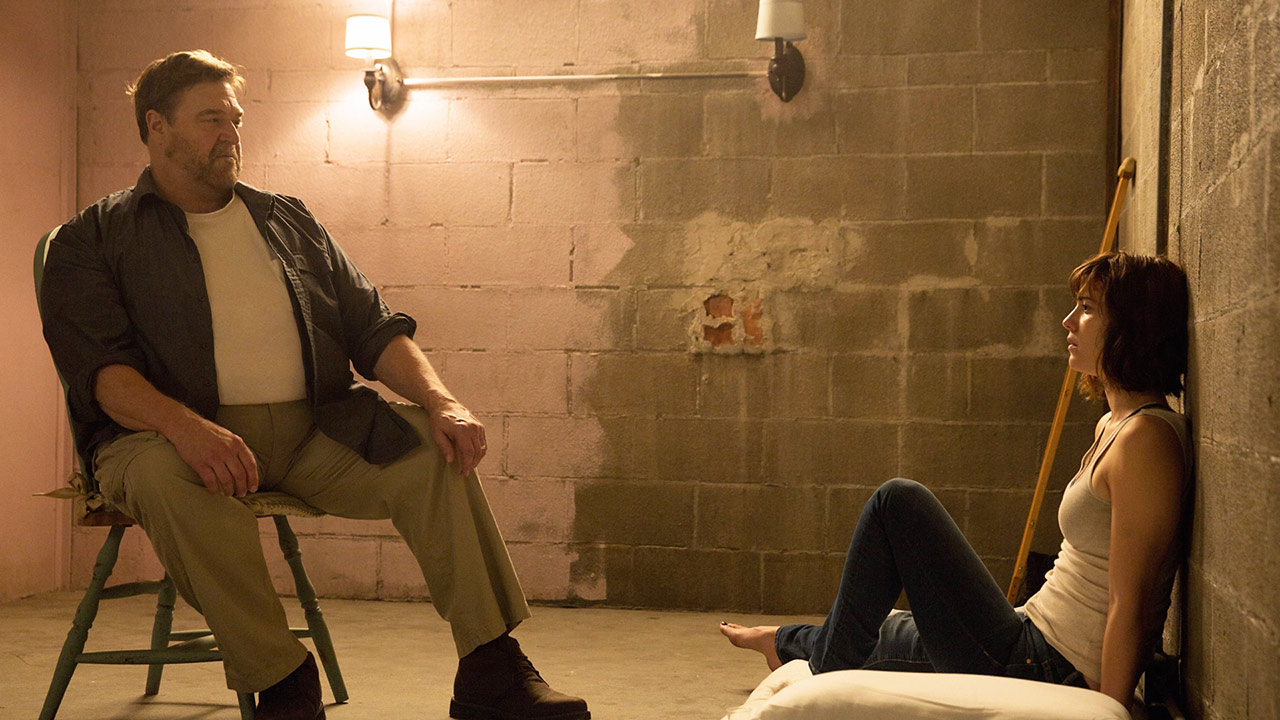
Crucial to the mystery in both films is a limited view of the outside world. We’re not given enough objective information about external circumstances, so we’re pushed into the subjective spaces of unreliable people, asked to ponder whether the seemingly insane person might actually be right (“You think I sound crazy,” says Howard, but “crazy is building your ark after the flood has already come”). Here 10 Cloverfield Lane has an edge over Knock at the Cabin, with Howard a more layered character and the exceptional John Goodman in fiendishly good form. Even if Howard is correct about the state of the world, he’s a terribly threatening presence: menacing, volatile, prone to angry outbursts and totally paranoid.
Glimpses of what’s going on beyond the immediate environment are carefully meted out. About 40 minutes into 10 Cloverfield Lane, Michelle sees a woman outside with a mangled splotchy face, begging to be let into the bunker, her ghastly visage suggesting there’s good reason to be frightened about the air, or whatever did this to her. Just enough to momentarily sate our curiosity and far from enough to form a complete picture. Martin Scorsese famously described cinema as “a matter of what is in the frame and what is not.” Balancing inclusion and exclusion can also be a powerful narrative tool: the art of revealing and not revealing.
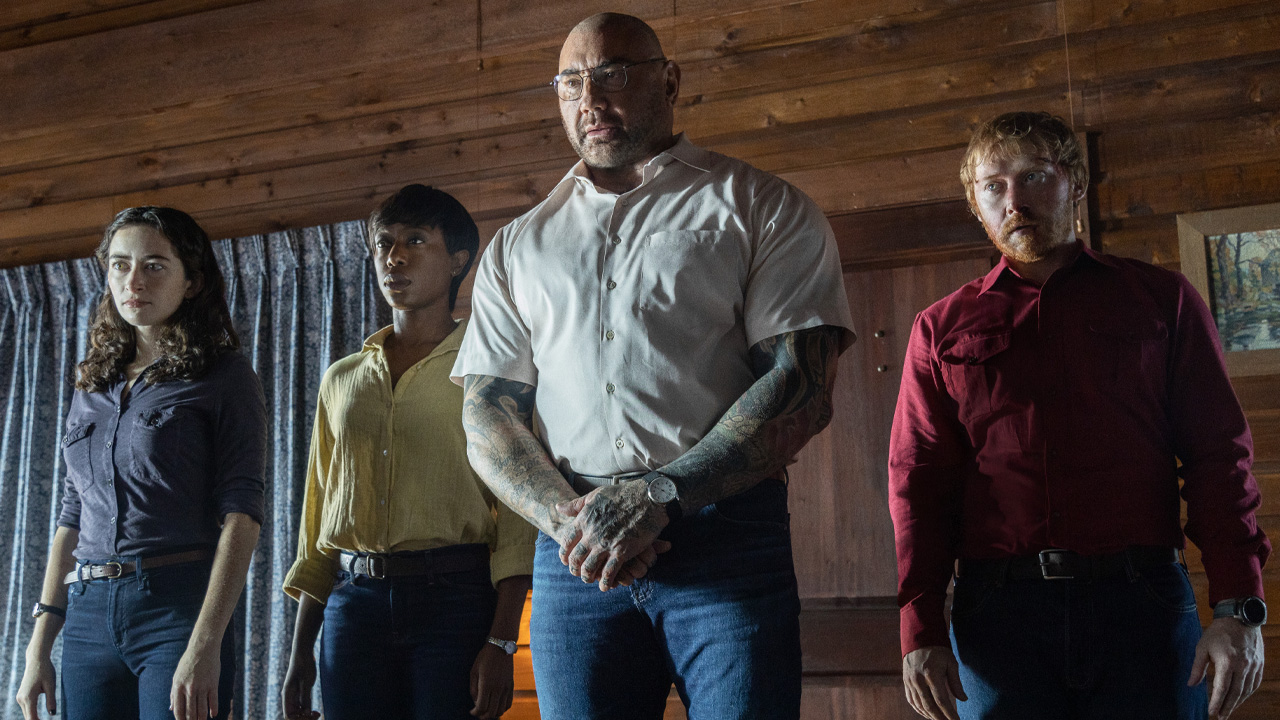
In Knock at the Cabin, Leonard turns on the television several times to show news broadcasts that “prove” what he’s saying is true, these broadcasts reporting various disasters in line with his prophecies. I used quotation marks around “prove” because things aren’t cut and dried: Andrew notices these broadcasts are pre-recorded and cries foul, suggesting the time-keeping Leonard may be orchestrating a ruse. This feeds into a salient message for the age of deepfakes and intensely diametric online discourse: that we can no longer believe our own eyes and ears.
And yet, the conclusions of both films argue that cold hard reality still exists. One leaves these films with a sour taste, not necessarily because the heroes do or do not win (there’ll be no spoilers here) but because their journeys are synonymous with irrevocable change. The final step in Joseph Campbell’s hero’s journey involves the (once reluctant) hero returning to ordinary life. But Knock at the Cabin and 10 Cloverfield Lane entertain the idea, throughout their runtimes, that if apocalypse isn’t societal it’s personal, making it hard to imagine the protagonist ever resuming “normal” existence. This destabilising concept lingers over both films like an acrid smell.








